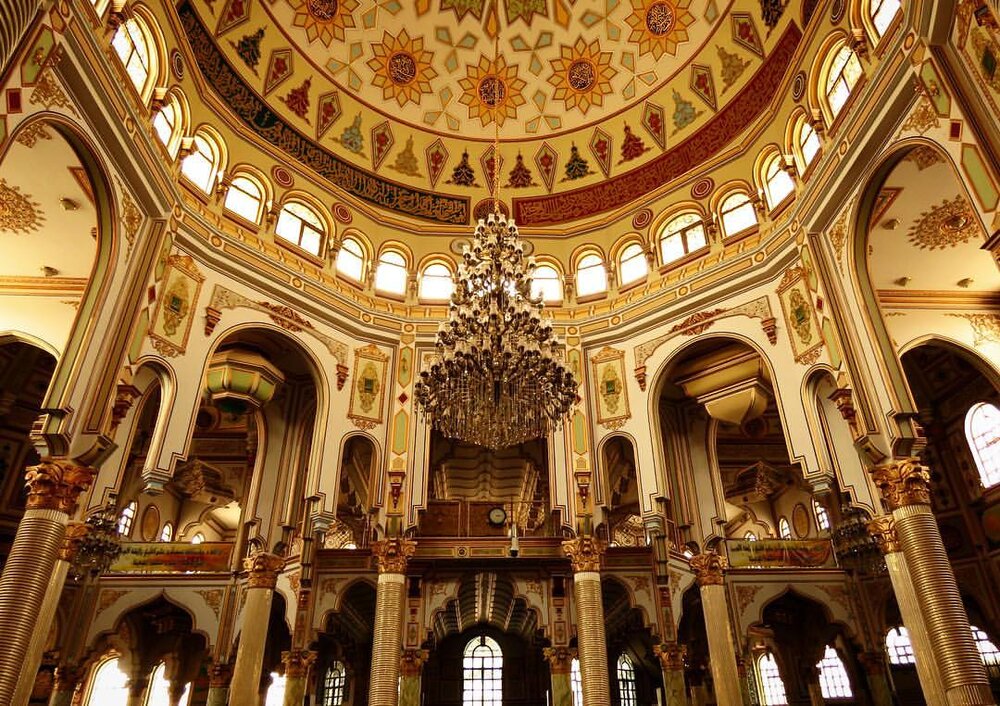Shafei Mosque: a picturesque place of grace

TEHRAN – The picturesque Shafei Jameh Mosque, which is a Sunni Muslims’ place of worship, stands tall in the ancient city of Kermanshah, western Iran.
The mosque is predominantly notable for having atmospheric hypostyle halls, intricate stucco, and sets of faience. The latter is a form of different-colored tiling sandwiched together to create the design.
Construction of the mosque was completed in 1945 under the auspices of Sunni benefactors. Its interior design is in some ways like its Turkish counterparts.
Verses of the Holy Quran have been inscribed on the stucco. The ceilings are impressively adorned by geometric patterns while encircling arched windows and letting in the sunlight during the day.
The mosque, however, has a somehow modest exterior when it comes to extravagant use of ornamentation. It has several modest domes and two minarets.
Visitors to the mosque may also revel in the nearby Tarikeh bazaar, a traditional marketplace stretched along labyrinth alleys.
Kermanshah is a cradle of civilization due to its antiquity, rich culture, and Neolithic sites that yielded rich collections of stone tools and fossil bones.

Proximity to the Achaemenid and Sassanid bas-relief carvings of Bisotun and Taq-e-Bustan is amongst other tourist drawcards for the city.
The English word "mosque" denotes a Muslim house of worship. The word evolved from the Arabic term masjid, which means "place of prostration." During prayer, Muslims briefly kneel and touch their foreheads to the ground as a sign of submission (literally, Islam) to the will of God.
The essential architectural elements include:
The qibla is the direction Muslims face when praying toward the Ka'ba in Mecca. The qibla wall is the wall in a mosque that faces Mecca.
The mihrab is a niche in the qibla wall indicating the direction of Mecca; because of its importance, it is usually the most ornate part of a mosque, highly decorated and often embellished with inscriptions from the Hoy Quran.
The minbar is a pulpit in the form of a staircase on which the prayer leader (imam) stands when delivering a sermon after Friday prayer. The pulpit is usually situated to the right of the mihrab and is often made of elaborately carved wood or stone.
A minaret is a tall tower attached or adjacent to a mosque. It is designed so the call to prayer, issued from mosques five times a day, can be heard loud and clear throughout a town or city. Alternatively, the call may be made from the roof or entrance and is now often projected with the aid of microphones and speakers. The minaret is also a visual symbol of the presence of Islam.
Most mosque courtyards (sahn) contain a public fountain, where believers can perform ablutions, the ritual washing of the hands, feet, and face required before prayer. In the arid lands of Arabia, water is revered as a gift from God, and fountains also have symbolic meaning, alluding to the four rivers of Paradise mentioned in the Holy Quran.
AFM
Leave a Comment